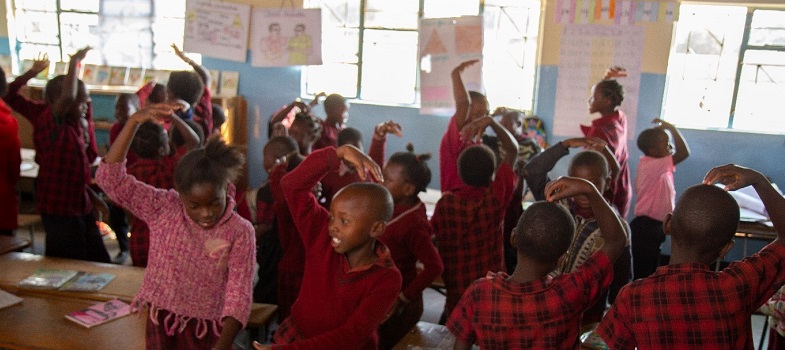Training guide
4. Storytelling, songs, games and roleplay
4.2. Games
Through games, learners can gain a variety of important skills, such as critical thinking, creativity and teamwork. Choose games that are appropriate for the level of your learners and for the classroom environment. Games can be used across content areas and over a variety of age ranges to support content and deepen learning.
Classroom Example 2.4: Using gamesListen to the audio or read the transcript of Patricia explaining how she used a game to support her numeracy lesson in Grade 2. While you listen, think about these questions. Afterwards, discuss them in pairs.
Audio transcript Patricia is a teacher in Liteta. In Grade 2 children need to be able to add and subtract numbers up to 100, in columns. Patricia noticed that some of her class were struggling to recognise two-digit numbers up to 100, even though they had done it in Grade 1. She invented a Bingo game to help her learners practise recognising numbers. She played the game with the whole class first. She gave each pupil a card and some buttons, and some stones she had collected on her way to school. Each card was different. The cards had 24 numbers between 1 and 99, arranged in 4 rows and 6 columns. A few drew pieces of paper, numbered 1 to 99, from a box and read them to the class. If a pupil found the number read out on their card, they placed a button or stone over it. The first pupil who had buttons/stones covering a row, column, or diagonal correctly won the game. As the pupils played the game, Patricia went round the class helping. The successful completion of a row, column, or diagonal is evidence of the ability to recognise two-digit numbers correctly. Next, she divided the class into groups of eight and they played the game at their own pace, taking it in turns to be the caller. Patricia also allowed pupils to play Bingo at break and she was surprised how many pupils played, especially on a wet day. She also noticed how much more confident they had become in mathematics classes. She extended the game by making more cards and more pieces of paper to include numbers up to 1000. (Adapted from TESSA Numeracy, Module 1, section 1, Case study 2) |
